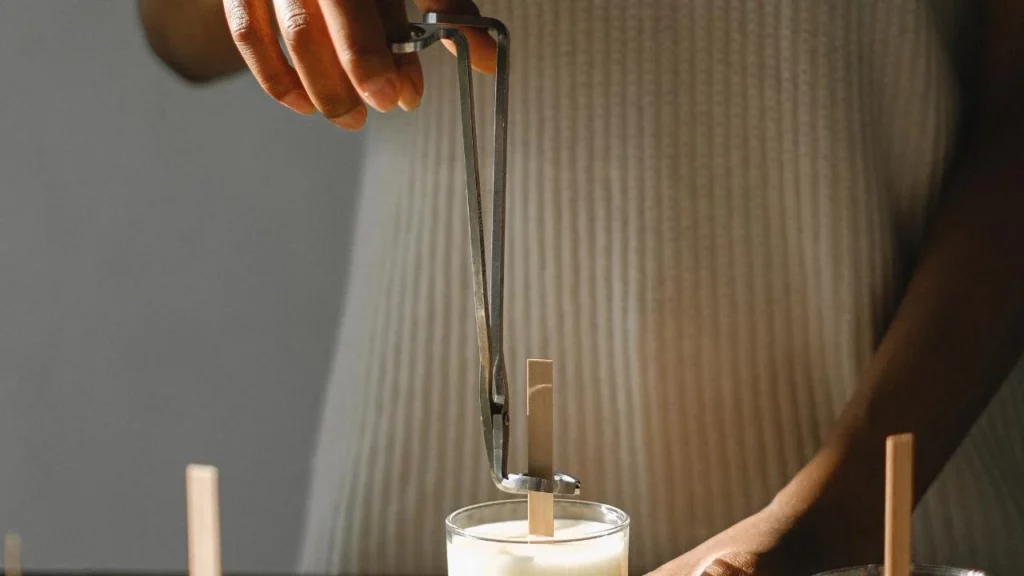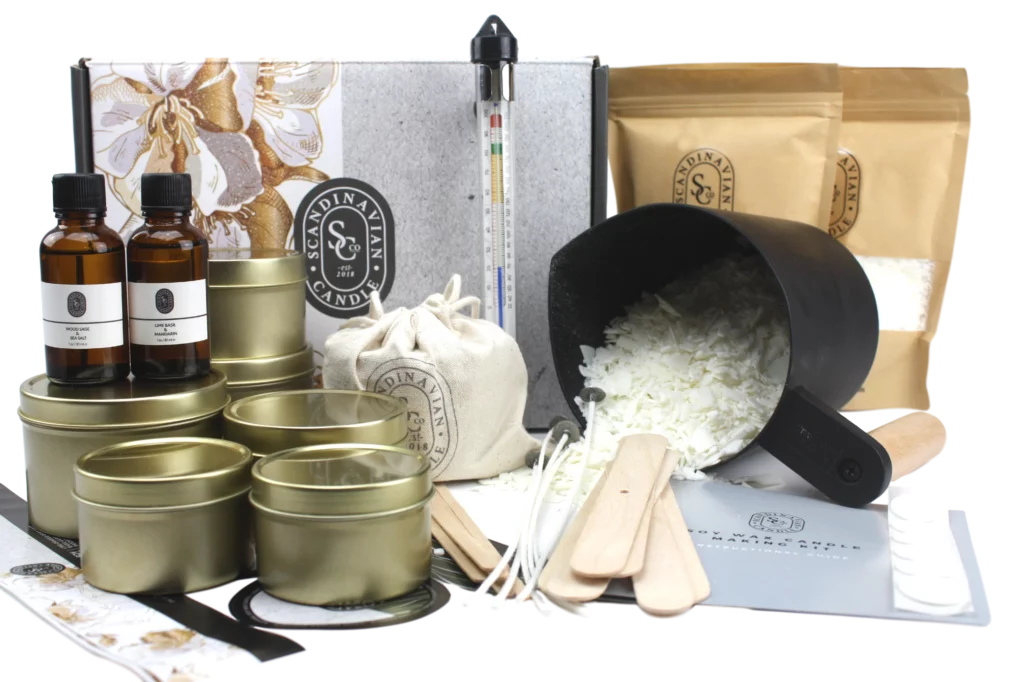Candle making is a popular craft that allows individuals to create personalized and unique candles for various occasions. Whether you are a beginner or have some experience in candle making, understanding the different types of supplies available is essential to produce high-quality candles.
In this article, we will explore the basics of beginners candle making kit and discuss their importance in creating beautiful candles.
Understanding the Basics of Candle Making
Before delving into the variety of supplies, it is important to comprehend the fundamentals of candle making. The process involves melting wax, adding color and fragrance, and pouring the mixture into molds or containers. Each step requires specific tools and materials to achieve the desired outcome.
Candle making is an ancient craft that dates back thousands of years. Initially used for providing light, candles have evolved into decorative and aromatic pieces that enhance ambiance and mood. The art of candle making involves a delicate balance of science and creativity, where precise measurements and techniques result in beautiful handcrafted candles.

The Importance of Quality Supplies
Using quality supplies is crucial to ensure the safety and longevity of your candles. Inferior materials can lead to poor burning performance, uneven melting, and even potential hazards. It is advisable to invest in high-quality supplies that are specifically designed for candle making.
Quality wax is the foundation of a good candle. Different types of wax, such as soy wax, beeswax, and paraffin wax, offer unique characteristics in terms of burn time, scent throw, and appearance. Choosing the right wax for your project is essential in achieving the desired results.
Essential Tools for Candle Making
There are several tools that you will need as a beginner candle maker. These include a double boiler or a heat-resistant container for melting wax, a thermometer to monitor the temperature, different types of stirring utensils, and molds or containers to shape the candles. It is important to have these tools on hand before starting your candle making journey.
Aside from the basic tools, investing in a good quality digital scale can help ensure accurate measurements of wax, fragrance oils, and dyes. Consistency in measurements is key to replicating your candle recipes and achieving consistent results batch after batch.
Diving into Different Types of Waxes
Wax is the primary material used in candle making, and there are various types of waxes available. Each wax has its own set of benefits and considerations, allowing you to choose the one that best suits your preferences and needs.
When selecting a wax for your candle making endeavors, it’s essential to consider not only the aesthetic qualities but also the environmental impact and performance characteristics of the wax. Understanding the unique properties of each type of wax can help you create candles that not only look beautiful but also burn efficiently and safely.
Soy Wax and Its Benefits
Soy wax is a popular choice among candle makers due to its eco-friendly nature. It is made from soybean oil and produces a clean and long-lasting burn. Soy wax candles also have a lower melting point, making them safer to use. Additionally, soy wax is known for its excellent scent throw, allowing for a strong and consistent fragrance.
Another advantage of soy wax is its versatility in holding color and fragrance, making it an ideal choice for creating custom candles with unique scents and hues. Soy wax is also easy to clean up with soap and water, simplifying the candle-making process and reducing waste.
Paraffin Wax: Pros and Cons
Paraffin wax is a widely used wax in candle making. It is derived from petroleum and offers several advantages, including its affordability and ease of use. Paraffin wax also has a high fragrance throw and provides a smooth and glossy finish to the candles. However, it is worth noting that paraffin wax is not biodegradable and may release potentially harmful substances when burned.
Despite its drawbacks, paraffin wax remains a popular choice for many candle makers due to its affordability and wide availability. When using paraffin wax, proper ventilation is crucial to minimize any potential health risks associated with burning this type of wax.

Beeswax: A Natural Alternative
Beeswax is a natural and sustainable option for candle making. It is produced by bees and offers a warm and natural scent. Beeswax candles have a slow and clean burn, producing minimal smoke and soot. However, beeswax is relatively expensive compared to other waxes, and it may require the use of a larger wick to ensure a proper burn.
In addition to its pleasant aroma and clean-burning properties, beeswax is also known for its natural air purification abilities. When burned, beeswax releases negative ions that can help neutralize pollutants in the air, making it a popular choice for eco-conscious consumers looking to improve indoor air quality.
Wicks: More Than Just a String
A wick is an essential component of a candle as it facilitates the burning process. Selecting the right wick is crucial to ensure that your candle burns properly and evenly.
Wicks come in various materials, including cotton, wood, and even hemp. Each material has its unique characteristics that can impact the way a candle burns and the overall aesthetic it provides. When choosing a wick material, consider not only the burning properties but also the visual appeal it adds to your candle.
Choosing the Right Wick Size
The size of the wick plays a vital role in how your candle performs. A wick that is too small will result in poor burning, with the wax tunneling down the center. On the other hand, a wick that is too large may cause the candle to produce excessive smoke and soot. It is recommended to follow wick size recommendations provided by suppliers or conduct test burns to determine the ideal wick for your specific candle.
Additionally, the length of the wick can also affect how the candle burns. A longer wick may produce a larger flame, while a shorter wick could result in incomplete combustion. Finding the right balance between wick size and length is key to achieving a clean and efficient burn.
Cotton Wicks vs. Wooden Wicks
Cotton wicks are the most commonly used wicks in candle making. They are versatile and suitable for various types of waxes. Cotton wicks provide a stable and consistent flame, ensuring an even burn. On the other hand, wooden wicks offer a unique aesthetic appeal and produce a subtle crackling sound reminiscent of a fireplace. Wooden wicks are ideal for soy wax candles and can create an immersive ambiance.
Another factor to consider when choosing between cotton and wooden wicks is the sustainability aspect. Cotton wicks are biodegradable and renewable, making them an eco-friendly choice. Wooden wicks, often made from sustainable sources like cherry or birch wood, add a touch of natural elegance to your candles and align with a more rustic or organic aesthetic.
Adding Color and Scent to Your Candles
Color and scent are essential components of a candle, as they contribute to its overall appearance and experience. There are different methods and supplies available to add color and fragrance to your candles.
Enhancing the visual and olfactory appeal of your candles can elevate them from simple objects to sensory experiences that captivate and delight. By carefully selecting the right colors and scents, you can create candles that not only illuminate a room but also fill it with inviting aromas that evoke different moods and memories.
Exploring Candle Dyes
Candle dyes come in various forms, including liquid, powder, and dye chips. They can be mixed to create custom colors, allowing you to unleash your creativity. It is important to follow usage instructions provided by the manufacturer to achieve the desired color intensity.
Experimenting with different combinations of candle dyes can lead to stunning results, whether you prefer vibrant and bold hues or soft pastel tones. Understanding the color wheel and color theory can also help you create harmonious color palettes that complement each other and enhance the overall aesthetic of your candles.
Fragrance Oils vs. Essential Oils
When it comes to scenting your candles, you have the option of using fragrance oils or essential oils. Fragrance oils offer a wide range of scents and are specifically formulated for candle making. They provide strong and long-lasting fragrance throws. On the other hand, essential oils are natural extracts derived from plants. They offer a more subtle and natural scent, but it is important to ensure that the essential oils are suitable for candle making and do not interfere with the burning process.
Choosing the right fragrance for your candles involves considering not only personal preferences but also the intended use of the candle. Whether you opt for soothing lavender, invigorating citrus, or warm vanilla, the scent you select can evoke different emotions and create unique atmospheres in your space. Pairing complementary scents with appropriate colors can further enhance the sensory experience of your candles, making them truly memorable and captivating.

Molds and Containers for Candle Making
The choice of molds or containers for your candles depends on the desired shape and style. Both options offer unique advantages and considerations for candle makers.
When selecting molds or containers for your candle making projects, it’s essential to consider not only the aesthetic appeal but also the practical aspects. The type of wax you are using, the fragrance load of your candles, and the intended use can all influence your decision. Understanding the properties of different materials will help you make an informed choice that aligns with your creative vision.
Silicone Molds: Advantages and Disadvantages
Silicone molds are popular among candle makers due to their flexibility and ease of use. They allow for intricate and detailed designs, making them ideal for novelty or decorative candles. However, silicone molds may require additional support to prevent distortion or bending during the pouring process.
One of the key advantages of silicone molds is their durability and longevity. With proper care and maintenance, silicone molds can be reused multiple times, making them a cost-effective option in the long run. Additionally, their non-stick surface facilitates easy release of the finished candles, ensuring that your creations come out looking flawless every time.
Glass Containers: A Classic Choice
Glass containers provide a classic and elegant look to candles. They are heat-resistant and allow for a beautiful display of the candle’s flame. Glass containers are suitable for container candles, allowing you to easily pour the melted wax directly into the vessel. It is important to choose containers specifically designed for candle making to ensure safety and prevent cracking under heat.
When opting for glass containers, consider the thickness and quality of the glass to ensure it can withstand the heat generated by the burning candle. Additionally, the transparency of glass allows for creative opportunities such as layering different colored waxes or embedding decorative elements within the candle for a visually stunning effect.
As a beginner candle maker, exploring the variety of candle making supplies can be both exciting and overwhelming. By understanding the basics of candle making, choosing high-quality supplies, and experimenting with different options, you can create beautiful and personalized candles that will enhance any space. Remember to enjoy the process and embrace your creativity as you embark on this fulfilling journey into the world of candle making.
Other resources: Why High-Quality Candle Making Kits are a Must-Have for Serious Crafters

